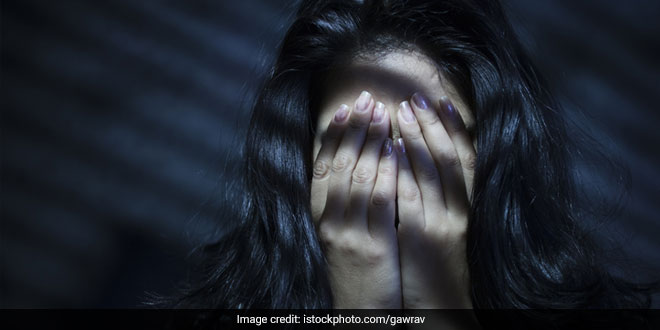New Delhi: Nearly 6 in 10 female teens in India are anaemic, according to new Indian research that analysed data from National Family Health Surveys (HFHS). Adolescent marriage and motherhood, along with poor nutritional status and other socio-economic variables such as wealth and education, were crucial risk determinants for anaemia in Indian females aged 15-19, the study from Banaras Hindu University, Uttar Pradesh, and other institutes found.
Further, Indian states with anaemia prevalence over 60 per cent more than doubled to 11 in 2019-21 from 5 in 2015-16, the study published in the journal PLOS Global Public Health said.
Anaemia, a significant public health issue particularly affecting women in India, is characterised by a deficiency in red blood cells, resulting in low vigour and energy.
Using data from the fourth and fifth rounds of the national surveys, NFHS-4 (2015-16) and NFHS-5 (2019-21), the research studied 1,16,117 and 1,09,400 female teenagers, respectively, to analyse trends regarding anaemia prevalence and identify risk factors for anaemia.
Prevalence of anaemia was higher in women married before 18 years of age, which accounted for around 10 and 8 per cent of the sampled women in NFHS-4 and NFHS-5, respectively. About 70 per cent of the participants lived in rural areas, the study said.
They further found that teenage mothers with at least 2 children were more anaemic than teenagers without children, with anaemia prevalence being higher in breastfeeding mothers.
More educated women teenagers were less likely to be anaemic, as education is linked to knowledge of nutrition and health and also leads to better access to healthcare and nutritious food through improved employment opportunities and income, the authors wrote.
Women belonging to the socio-economically disadvantaged groups such as SC and ST were more likely to be anaemic than other social groups, which the authors attributed to factors like historical, undernutrition, limited healthcare access, early childbearing and discrimination.
Women adolescents from the northeastern states of India were at lower risk of anaemia than women from the other parts of the country, the researchers noted.
They said this was likely due to the diverse and nutritious diet, that includes iron-rich red rice, traditionally consumed in these states, with their culture emphasising on locally-grown and seasonal foods playing an important role.
These, along with high red meat consumption, were some factors contributing to low anaemia rates in these regions, the authors wrote.
Overall, among all the 28 Indian states, 21 were found to report an increase in anaemia prevalence to varying degrees.
While Assam, Chhattisgarh, and Tripura showed a substantial rise of 15 percentage points, the states of Punjab, Karnataka, Telangana, Bihar, and Madhya Pradesh recorded a marginal increase of less than 5 percentage points.
However, Uttarakhand and Kerala exhibited a decline in anaemia prevalence during the study period, offering potential insights for further exploration, the researchers said.
Despite the Indian government implementing several programs aimed at addressing anaemia in women and children over the past five decades, anaemia prevalence is rapidly increasing, possibly owing to insufficient coverage, inadequate implementation, lack of behavioural change, inadequate monitoring and evaluation, the persistence of underlying risk factors, and resistance to good dietary practices, they said.
The study findings underscored the urgency of addressing anaemia in female teenagers and that they could be leveraged to develop tailored interventions aimed at reducing anaemia prevalence, the researchers said.
(This story has not been edited by NDTV staff and is published from a syndicated feed.)
NDTV – Dettol have been working towards a clean and healthy India since 2014 via the Banega Swachh India initiative, which is helmed by Campaign Ambassador Amitabh Bachchan. The campaign aims to highlight the inter-dependency of humans and the environment, and of humans on one another with the focus on One Health, One Planet, One Future – Leaving No One Behind. It stresses on the need to take care of, and consider, everyone’s health in India – especially vulnerable communities – theLGBTQ population,indigenous people, India’s different tribes, ethnic and linguistic minorities, people with disabilities, migrants, geographically remote populations, gender and sexual minorities. In wake of the currentCOVID-19 pandemic, the need for WASH (Water,SanitationandHygiene) is reaffirmed as handwashing is one of the ways to prevent Coronavirus infection and other diseases. The campaign will continue to raise awareness on the same along with focussing on the importance of nutrition and healthcare for women and children, fightmalnutrition, mental wellbeing, self care, science and health,adolescent health & gender awareness. Along with the health of people, the campaign has realised the need to also take care of the health of the eco-system. Our environment is fragile due to human activity, which is not only over-exploiting available resources, but also generating immense pollution as a result of using and extracting those resources. The imbalance has also led to immense biodiversity loss that has caused one of the biggest threats to human survival – climate change. It has now been described as a “code red for humanity.” The campaign will continue to cover issues likeair pollution,waste management,plastic ban,manual scavengingand sanitation workers andmenstrual hygiene. Banega Swasth India will also be taking forward the dream of Swasth Bharat, the campaign feels that only a Swachh or clean India wheretoiletsare used andopen defecation free (ODF)status achieved as part of the Swachh Bharat Abhiyan launched byPrime Minister Narendra Modiin 2014, can eradicate diseases like diahorrea and the country can become a Swasth or healthy India.



























